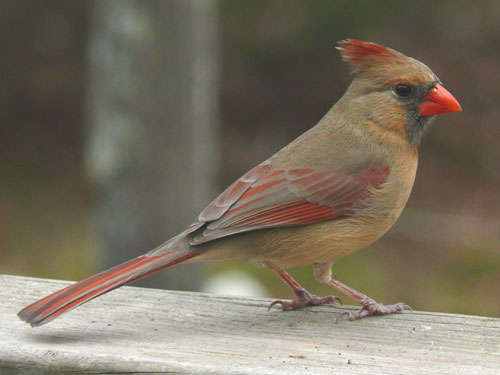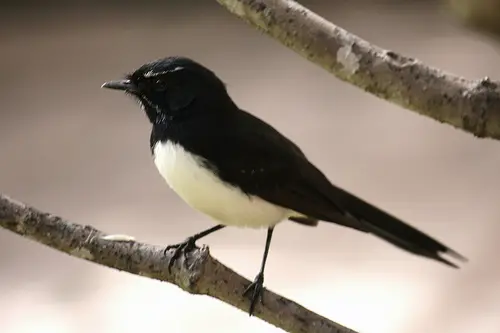Cardinal
The northern Cardinal, was named because of its brilliant plumage and it is a hardy bird that is capable of living in almost any kind of environment.
The bird is located in the United States and seven states have chosen it to be their state bird.
It is very common in wintertime, roosting in pine trees and sighted several times daily at bird feeders throughout the Midwest to the extreme northeast states of New York and New England.

Cardinal
Physical Characteristics
- Medium-sized bird known for its beautiful song..
- Has a large upright crest on its head.
- Very heavy thick bill
- Bill is surrounded by black coloring
- Male is brilliant red.
- Female grayish-tan or brown with red tail and wings.
The cardinal emits a series of long crystal clear whistling sounds, which have been recorded over the years as one of the most pleasant bird songs.
It is remarkable in its ability to sing from the nest and many researchers believe it is the females method of keeping in contact with her mate and letting him know where to bring in the food for the nestlings.
Male cardinals stay with the female during her nesting, which is uncommon for many bird species. He will supply food for both mother and nestling .
The mated pair shares phrases in song, which may be their methods of calling to each other.
Cardinals mate for entire seasons and spend a lot of time together. Some cardinals mate for life, however their lifespan is shortened and in most cases, by a year.
The male cardinal will ferociously defend its territory from other birds and often, when its sees its reflection in a window or other reflecting device they will duel with the other bird for literally hours.
Although the reasons for this are not known, the more brilliant the coloring of the male cardinal, the better its territory, it is more lush and dense with vegetation, it will also breed with better success than the males of a duller color and feeds more frequently and with a higher rate.
The Cardinal is one of the few birds who have increased their range and numbers of the last 100 years, benefiting from such things as bird feeders and national park lands habitation of humans.
In one state alone, California, has it listed as a species of concern, due to habitat loss.
Find out more about the Cardinal over at Wikipedia


